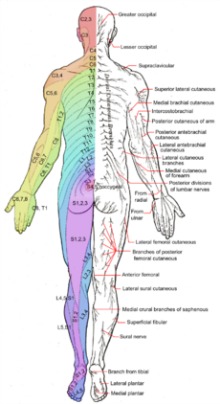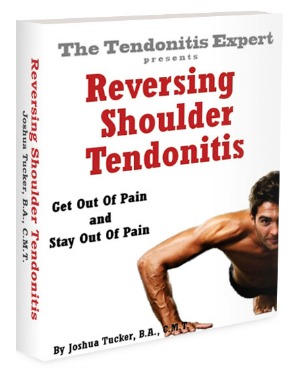Overview

Achilles tendon rupture is an injury that affects the back of your lower leg. It most commonly occurs in people playing recreational sports. The Achilles tendon is a strong fibrous cord that connects the muscles in the back of your calf to your heel bone. If you overstretch your Achilles tendon, it can tear (rupture). The tendon can rupture completely or just partially. If you have an Achilles tendon rupture, you might feel a pop or snap, followed by an immediate sharp pain in the back of your ankle and lower leg that usually affects your ability to walk properly. Surgery is often the best treatment option to repair an Achilles tendon rupture. For many people, however, nonsurgical treatment works just as well.
Causes
There are a number of factors that can increase the risk of an Achilles tendon rupture, which include the following. You?re most likely to rupture your Achilles tendon during sports that involve bursts of jumping, pivoting and running, such as football or tennis. Your Achilles tendon becomes less flexible and less able to absorb repeated stresses, for example of running, as you get older. Small tears can develop in the fibres of the tendon and it may eventually completely tear. There is a very small risk of an Achilles tendon rupture if you have Achilles tendinopathy (also called Achilles tendinitis). This is where your tendon breaks down, which causes pain and stiffness in your Achilles tendon, both when you exercise and afterwards. If you take quinolone antibiotics and corticosteroid medicines, it can increase your risk of an Achilles tendon injury, particularly if you take them together. The exact reasons for this aren't fully understood at present.
Symptoms
Often the person feels a whip-like blow that is followed by weakness in the affected leg - usually he or she is not able to walk afterwards. At place where the tendon ruptured, a significant dent is palpable. Often the experienced physician can diagnose a ruptured Achilles tendon by way of clinical examination and special function tests. Imaging techniques, such as ultrasound and magnetic resonance imaging (MRI) allow for a more precise diagnosis.
Diagnosis
The actual area of an Achilles tendon rupture cannot be seen on x-ray. Therefore, although x-rays are often done to rule out bony injuries in individuals with an Achilles tendon rupture these x-rays are usually normal. Diagnostic ultrasound of the tendon can be performed to assess the integrity of the tendon. Other diagnostic tests, such as MRI's, may also be required in difficult cases.
Non Surgical Treatment
Medical therapy for a patient with an Achilles tendon rupture consists of rest, pain control, serial casting, and rehabilitation to maximize function. Ongoing debate surrounds the issue of whether medical or surgical therapy is more appropriate for this injury. Conservative management of Achilles tendinosis and paratenonitis includes the following. Physical therapy. Eccentric exercises are the cornerstone of strengthening treatment, with most patients achieving 60-90% pain relief. Orthotic therapy in Achilles tendinosis consists of the use of heel lifts. Nonsteroidal anti-inflammatory drugs (NSAIDs). Tendinosis tends to be less responsive than paratenonitis to NSAIDs. Steroid injections. Although these provide short-term relief of painful symptoms, there is concern that they can weaken the tendon, leading to rupture. Vessel sclerosis. Platelet-rich plasma injections. Nitric oxide. Shock-wave therapy.

Surgical Treatment
Surgical techniques for rupture repair are varied but usually involve reapproximation of the torn ends of the Achilles tendon, sometimes reinforced by the gastrocsoleus aponeurosis or plantaris tendon. Open reconstruction is undertaken using a medial longitudinal approach. Studies indicate that patients who undergo percutaneous, rather than an open, Achilles tendon rupture repair have a minimal rate of infection but a high rate of sural nerve entrapment (16.7% of treated cases).

Achilles tendon rupture is an injury that affects the back of your lower leg. It most commonly occurs in people playing recreational sports. The Achilles tendon is a strong fibrous cord that connects the muscles in the back of your calf to your heel bone. If you overstretch your Achilles tendon, it can tear (rupture). The tendon can rupture completely or just partially. If you have an Achilles tendon rupture, you might feel a pop or snap, followed by an immediate sharp pain in the back of your ankle and lower leg that usually affects your ability to walk properly. Surgery is often the best treatment option to repair an Achilles tendon rupture. For many people, however, nonsurgical treatment works just as well.
Causes
There are a number of factors that can increase the risk of an Achilles tendon rupture, which include the following. You?re most likely to rupture your Achilles tendon during sports that involve bursts of jumping, pivoting and running, such as football or tennis. Your Achilles tendon becomes less flexible and less able to absorb repeated stresses, for example of running, as you get older. Small tears can develop in the fibres of the tendon and it may eventually completely tear. There is a very small risk of an Achilles tendon rupture if you have Achilles tendinopathy (also called Achilles tendinitis). This is where your tendon breaks down, which causes pain and stiffness in your Achilles tendon, both when you exercise and afterwards. If you take quinolone antibiotics and corticosteroid medicines, it can increase your risk of an Achilles tendon injury, particularly if you take them together. The exact reasons for this aren't fully understood at present.
Symptoms
Often the person feels a whip-like blow that is followed by weakness in the affected leg - usually he or she is not able to walk afterwards. At place where the tendon ruptured, a significant dent is palpable. Often the experienced physician can diagnose a ruptured Achilles tendon by way of clinical examination and special function tests. Imaging techniques, such as ultrasound and magnetic resonance imaging (MRI) allow for a more precise diagnosis.
Diagnosis
The actual area of an Achilles tendon rupture cannot be seen on x-ray. Therefore, although x-rays are often done to rule out bony injuries in individuals with an Achilles tendon rupture these x-rays are usually normal. Diagnostic ultrasound of the tendon can be performed to assess the integrity of the tendon. Other diagnostic tests, such as MRI's, may also be required in difficult cases.
Non Surgical Treatment
Medical therapy for a patient with an Achilles tendon rupture consists of rest, pain control, serial casting, and rehabilitation to maximize function. Ongoing debate surrounds the issue of whether medical or surgical therapy is more appropriate for this injury. Conservative management of Achilles tendinosis and paratenonitis includes the following. Physical therapy. Eccentric exercises are the cornerstone of strengthening treatment, with most patients achieving 60-90% pain relief. Orthotic therapy in Achilles tendinosis consists of the use of heel lifts. Nonsteroidal anti-inflammatory drugs (NSAIDs). Tendinosis tends to be less responsive than paratenonitis to NSAIDs. Steroid injections. Although these provide short-term relief of painful symptoms, there is concern that they can weaken the tendon, leading to rupture. Vessel sclerosis. Platelet-rich plasma injections. Nitric oxide. Shock-wave therapy.

Surgical Treatment
Surgical techniques for rupture repair are varied but usually involve reapproximation of the torn ends of the Achilles tendon, sometimes reinforced by the gastrocsoleus aponeurosis or plantaris tendon. Open reconstruction is undertaken using a medial longitudinal approach. Studies indicate that patients who undergo percutaneous, rather than an open, Achilles tendon rupture repair have a minimal rate of infection but a high rate of sural nerve entrapment (16.7% of treated cases).



 Back pain specialists realize that ischemia of the muscle and nerve tissues is the most common cause for all varieties of painful backs. Many accepted treatment modalities increase cellular oxygenation, providing short term symptomatic relief from the pain. This is the reason why some treatments provide symptomatic amelioration even when the reasons for that relief defy logic. This product is not intended to diagnose, treat, cure or prevent any disease. Our leading spine experts are here to help you find relief today from your back pain, neck pain, or other spine condition. Browse our exhaustive video library, get tips on back pain exercises, and visit our Community section to discuss your pain. Patients who qualify for clinical trials may benefit by receiving expert back pain treatment at leading medical facilities. When someone first begins feeling pain in their back, they can easily correct it by improving their posture. However, if you don't correct your posture your joints will eventually begin to wear out over time. Often, other parts of the body are affected such as the lungs, which will not be able to get a proper amount of oxygen due to the upper body being bent over.
Back pain specialists realize that ischemia of the muscle and nerve tissues is the most common cause for all varieties of painful backs. Many accepted treatment modalities increase cellular oxygenation, providing short term symptomatic relief from the pain. This is the reason why some treatments provide symptomatic amelioration even when the reasons for that relief defy logic. This product is not intended to diagnose, treat, cure or prevent any disease. Our leading spine experts are here to help you find relief today from your back pain, neck pain, or other spine condition. Browse our exhaustive video library, get tips on back pain exercises, and visit our Community section to discuss your pain. Patients who qualify for clinical trials may benefit by receiving expert back pain treatment at leading medical facilities. When someone first begins feeling pain in their back, they can easily correct it by improving their posture. However, if you don't correct your posture your joints will eventually begin to wear out over time. Often, other parts of the body are affected such as the lungs, which will not be able to get a proper amount of oxygen due to the upper body being bent over. Michael Banna is a GP in West Sussex with an interest in Mental Health and Medical Education, who can generally be found either eating cake or wishing he had eaten less cake. Bearing in mind that the article referenced here is based on research which produced a measured conclusion, and that: The researchers say the mechanisms behind lower back pain may differ to those in pain felt in other conditions…”, I should say that the writer above is wasting his breath; his experience, lengthy and very relevant as it may be, can't equal the rigor of the study. Gentle back stretches can help a lot, but non-exercisers mostly don't know what these are. I saw it give relief for a broken dislocated shoulder when morphine and codeine hadnt hit the spot. There is good evidence from research trials that it can help. It is used as a treatment for various health problems including various types of chronic pain. If the above treatments have not helped much then you may be referred to a specialist pain clinic. Rarely, a surgical operation called spinal fusion is considered when all other treatment options have not helped and pain remains constant and severe. Evidence suggests that the best way to prevent bouts of low back pain is simply to keep active and to exercise regularly. There is no firm evidence to say that any particular back strengthening exercises are more useful to prevent back pain than simply keeping fit and active. Hill JC, Whitehurst DG, Lewis M, et al ; Comparison of stratified primary care management for low back pain with current best practice (STarT Back): a randomised controlled trial. The good news is yes! The most common reaction people have to lower left back pain is taking painkillers, self medication should be avoided if possible, because it may inadvertently complicate the problems. To correctly diagnose the reason behind pain under your ribs, you have to consider the accompanying symptoms. Larry Taylor, 55, an airline pilot from Olympia, Wash., began suffering from lower-back pain when he was 28 and flying cargo planes in the Philippines. The pain worsened in his 30s and 40s, eventually shooting down his left leg as well. Your doctor may suggest that you see a surgeon if your back pain is unrelenting and no form of treatment seems to work, or if serious neurological deficits set in, such as foot drop, an inability to raise the front part of the foot due to a weakness or even paralysis of the muscles. The information provided by surgeons was a key aspect of decision-making for the people we surveyed as they contemplated back surgery. Nine in 10 patients told us they relied on information from their surgeon "a lot" before agreeing to an operation, according to a survey of almost 1,000 subscribers who said they had a lower-back operation in the last five years. His back pain turned excruciating when he went canvassing in the hills of San Francisco last June.
Michael Banna is a GP in West Sussex with an interest in Mental Health and Medical Education, who can generally be found either eating cake or wishing he had eaten less cake. Bearing in mind that the article referenced here is based on research which produced a measured conclusion, and that: The researchers say the mechanisms behind lower back pain may differ to those in pain felt in other conditions…”, I should say that the writer above is wasting his breath; his experience, lengthy and very relevant as it may be, can't equal the rigor of the study. Gentle back stretches can help a lot, but non-exercisers mostly don't know what these are. I saw it give relief for a broken dislocated shoulder when morphine and codeine hadnt hit the spot. There is good evidence from research trials that it can help. It is used as a treatment for various health problems including various types of chronic pain. If the above treatments have not helped much then you may be referred to a specialist pain clinic. Rarely, a surgical operation called spinal fusion is considered when all other treatment options have not helped and pain remains constant and severe. Evidence suggests that the best way to prevent bouts of low back pain is simply to keep active and to exercise regularly. There is no firm evidence to say that any particular back strengthening exercises are more useful to prevent back pain than simply keeping fit and active. Hill JC, Whitehurst DG, Lewis M, et al ; Comparison of stratified primary care management for low back pain with current best practice (STarT Back): a randomised controlled trial. The good news is yes! The most common reaction people have to lower left back pain is taking painkillers, self medication should be avoided if possible, because it may inadvertently complicate the problems. To correctly diagnose the reason behind pain under your ribs, you have to consider the accompanying symptoms. Larry Taylor, 55, an airline pilot from Olympia, Wash., began suffering from lower-back pain when he was 28 and flying cargo planes in the Philippines. The pain worsened in his 30s and 40s, eventually shooting down his left leg as well. Your doctor may suggest that you see a surgeon if your back pain is unrelenting and no form of treatment seems to work, or if serious neurological deficits set in, such as foot drop, an inability to raise the front part of the foot due to a weakness or even paralysis of the muscles. The information provided by surgeons was a key aspect of decision-making for the people we surveyed as they contemplated back surgery. Nine in 10 patients told us they relied on information from their surgeon "a lot" before agreeing to an operation, according to a survey of almost 1,000 subscribers who said they had a lower-back operation in the last five years. His back pain turned excruciating when he went canvassing in the hills of San Francisco last June.
 RSS Feed
RSS Feed
